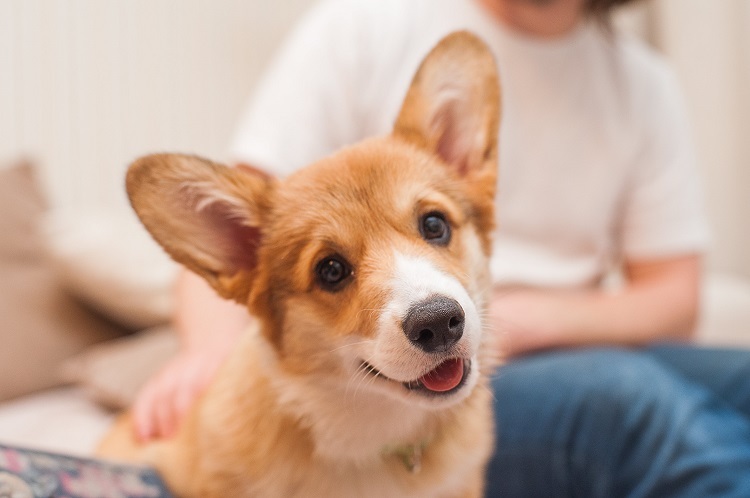Man’s best friend- Well, a dog is called that for a reason, and only a proud dog owner knows what it means to have a dog. They not only make the world a better place to live in, but their unconditional love and support change the lives of their human friends in a meaningful manner.
No doubt, having a dog is one of the best feelings any human can ever feel. Still, many dog owners also generally complain about their dog’s destructive behavior when left alone. They talk about how their little ball of fur urinates, defecate, chew, howl, or even tries to escape when he does not find his human friend around.
In general, people end up feeling frustrated and thinking that their dog might need to be taught polite house manners, but they do not realize that this might be an indication of feelings of distress in them.
When a dog starts behaving awkwardly as and when they see their owner leaving the house, this might be an indication that they are prone to separation anxiety.
In simple terms, dogs suffer from the problem of separation anxiety when they are separated from their guardians or the people they are attached to. The stress triggers when the dogs see their guardians leaving or when they are not present.
Can you relate to the situation of seeing your dog’s disruptive behavior when he is left alone at home?
Well, don’t worry. This article will guide you through the situation well, along with the tips to treat the same.
Table of Contents
Symptoms of Separation Anxiety in Dogs
The following list of symptoms shows separation anxiety in dogs:
Excessive Barking and Howling
 A dog with separation anxiety might bark or howl when separated from his guardian or left alone. This kind of barking or howling is persistent and is not usually triggered by anything else other than being left alone.
A dog with separation anxiety might bark or howl when separated from his guardian or left alone. This kind of barking or howling is persistent and is not usually triggered by anything else other than being left alone.
Urinating and Defecating
When dogs are separated from their owners or when they are left alone at home, they may urinate or defecate. If even in the presence of his beloved human, a dog urinates or defecates, then such behavior makes it clear that he is not suffering from separation anxiety.
Chewing and Digging
Many dogs with separation anxiety chew on objects like furniture, door, and windows, etc. They also exhibit the behavior of destroying objects indoor when left alone at home. Such destructive behaviors may also result in self-injury, such as damaged nails or broken teeth.
Note: If a dog’s destructive behavior is the result of them being triggered by separation anxiety, then they do not show off the same action in the presence of their human friend.
Pacing
Some dogs walk along a specific path like in a circular motion or walk back and forth along a straight way in the absence of their guardian. If such behavior is the result of separation anxiety, then a dog does not exhibit the same in the presence of their guardian.
Escaping
A dog might try to escape when he is left alone or separated from his human friend if he is suffering from separation anxiety. He might make an attempt and try to dig through the doorways, which can also result in an injury, such as damaged teeth, scraped paws, or broken nails.
Related: 7 key ways to prevent your dog from running away.
Why Dogs Develop Separation Anxiety?
There is no clear evidence supporting the reliable causes of why dogs develop separation anxiety. However, it is believed that a sudden loss of their human companion might result in separation anxiety. Other less dramatic situations may also lead to separation anxiety.
The following list of situations may be associated with the development of separation anxiety:
Change in House
Moving to a new house can trigger the development of separation anxiety in dogs.
Change in the Schedule
A sudden change in the schedule of leaving your dog alone, especially for a long time can also trigger the development of separation anxiety. For instance, if a dog owner works from home and usually spends the whole day around his dog, but then he gets an office job and leaves home for 7-9 hours, the dog is more prone to develop separation anxiety.
Change in Family
If a dog is abandoned by his owner, or if he is given to a new family or surrendered to a shelter, then there are chances that they may develop separation anxiety.
Change in House Member
A sudden loss of a loved one (animal friend or human companion) either due to death or moving to another place can trigger the development of separation anxiety in dogs.
You may find out more about common dog behaviors by clicking on the following link: www.mypetchild.com
Tips to Treat Separation Anxiety in Dogs
If the problem is mild…
- Give a toy to your dog every time you leave and take it back whenever you come back home.
- Keep your leaving the house and coming back low-key. Also, remember to ignore your pet for a few minutes after you reach back home.
- Leave some comfort providers like your worn-out clothes for them to smell when you are not around.
If the problem is serious…
- Talk to your vet for treating your dog through medical supplements.
- Involve your dog in physical and mental exercises before you leave the house. This will help him get tired and sleepy while you are not present.
No matter how mild or severe the problem is, always remember to stay calm while dealing with a dog with separation anxiety. After all, all they crave for is your love and presence.
So, make sure you do not get irritated or annoyed with your dog and help him in the best possible way you can.
Also, we like to hear from you, so if you have any other thoughts on dogs with separation anxiety, feel free to share the same in the comment box below.

